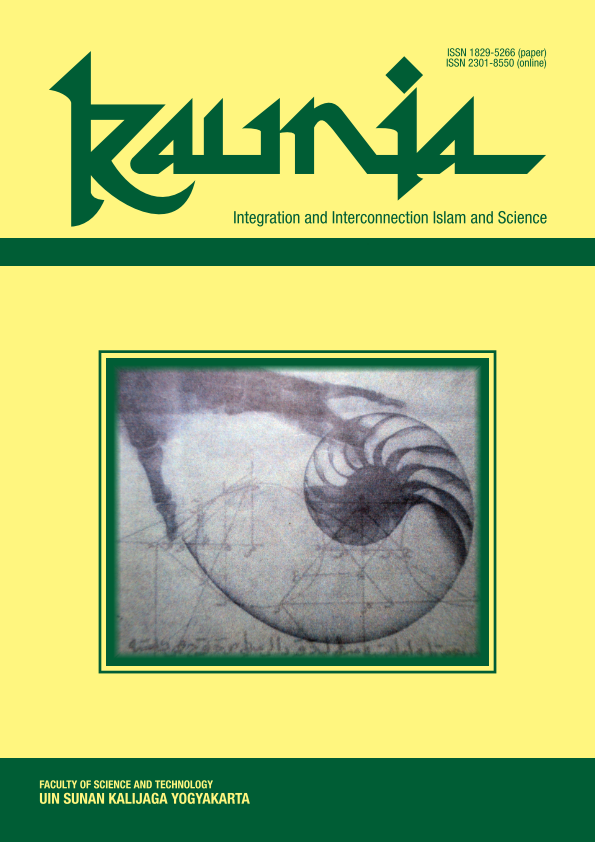The Effect of Multiple Inteligence (MI) Towards The Character of Seventh Grade Students of IPA Madrasah Mu'allimin Muhammadiyah Yogyakarta
DOI:
https://doi.org/10.14421/kaunia.2292Keywords:
multiple intelligence, solemn prayAbstract
The purpose of this research is to analyze the role of multiple intelligence toward solemn pray (sholat khusyuk) of seventh grade student of IPA of Madrasah Mu’alimin Muhammadiyah Yogyakarta. The research was done to contribute in theory development especially related to Islamic Psychology. It is expected to give the real contribution in increasing the solemn practice pray, especially in Madrasah Mu’alimin Muhammadiyah Yogyakarta. Eighty five students were used as sample in this research. The data were analyzed by multiple regression using SPSS program 19.00 version. The results of this research were: 1. The nine independent variables (linguistic intelligence, math logic, musical, kinesthetic, special-visual, interpersonal, intrapersonal, naturalistic, and existential) have roletoward dependent variable (solemn pray) and the trend was positively significant. 2. The nine independent variables give contribution toward dependent variable 95,6%. 3. The independent variable that have dominant role is existencial variable namely 92,3% toward dependent variable. 4. The eight independent variable (linguistic intelligence, math logic, musical, kinesthetic, special-visual, interpersonal, intrapersonal, naturalistic) do not give significant contribution toward dependent variable.References
Gardner, Horward, Multiple Intelligences: The Theory in Practice, Basic Books, ISBN 046501822X, 1993.
Jabi Tambayong, Dasar-Dasar Dramaturgi: Pustaka Prima, 1981.
James Winston Morries, Sufi-sufi Merajut Peradaban : Forum Sebangsa, 2002.
Thomas Hidya Tjaya, Keirkegaard dan Pergulatan Menjadi Diri Sendiri: Kepustakaan Populer Gramedia, 2018.
Keraf, Gorys. Diksi dan Gaya Bahasa. Jakarta: PT. Gramedia. 2005.
Downloads
Published
How to Cite
Issue
Section
License
All articles published in Kaunia are licensed under a Creative Commons Attribution-NonCommercial-ShareAlike 4.0 International license, with the copyright to these articles held by the journal. Anyone is free to read, download, copy, distribute, print, search, link to full text articles, or transform an article, in any medium or format, provided they do so non-commercially, give appropriate credit to Kaunia, and distribute any derivative work under the same (or equivalent) terms.
By submitting to Kaunia, authors agree to both the terms of the CC BY-NC-SA license and the automatic transfer of the copyright to their article if it is accepted.









